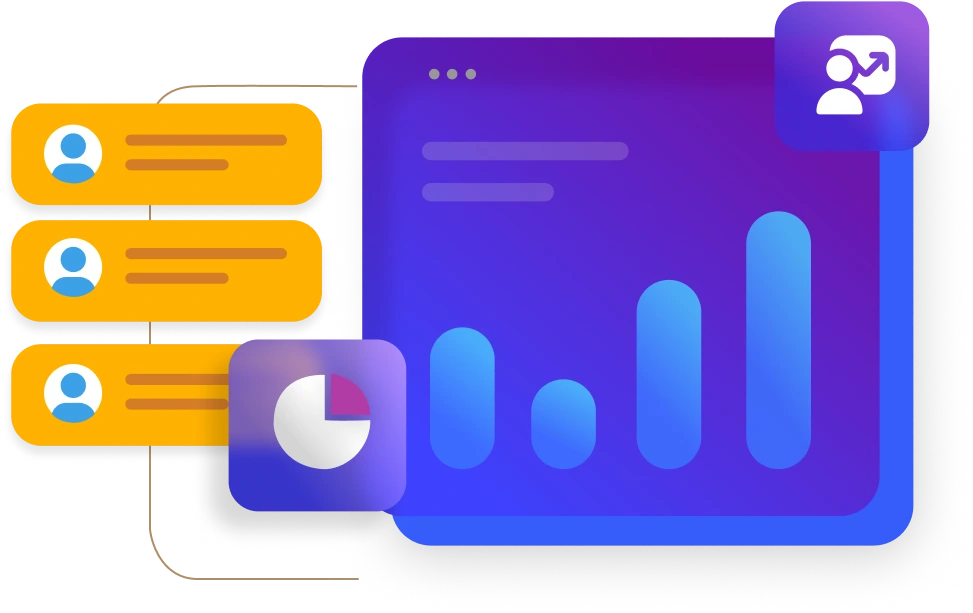6 Ways to Upgrade Your Mortgage Website from “Business Card” to “Lead Generator”

In the dawn of days—that is, the time before the Internet—there was only…the Business Card.
Professionals lived their social lives through this business card.
It had it all: your phone number, fax number, mailing address… it was how you reached people.
Until it wasn’t.
Nowadays, a website can do so much more than a business card. It can engage potential leads. It can make sales for you. It can even interact with clients while you sleep.
So why do so many mortgage professionals want to make their website… into just another business card?
See Your Potential ROI with leadpops
See what's possible. Fix it fast.
You’ve seen the types: business web pages with nothing but basic information.
No “juice,” no “persuasion,” no interesting content for those looking for a mortgage whatsoever.
If you want your mortgage website to do more than merely list your basic contact information, it’s time to learn what a website can do when you have the right tools at your disposal.
1. Adding a Newsletter and an Email Capture
One of the most useful purposes of a website is that you can generate leads through it. And this is often accomplished through a simple tool: an email capture for a newsletter.
You may have signed up for them yourself.
Book My FREE
Growth Strategy
Session
See what's possible. Fix it fast.

It’s a very simple process. You create an automated newsletter signup and use a webpage plugin to capture the emails of anyone who’s willing to sign up.
For you mortgage marketers, that means potential leads—people who are already on your site and already interested in what you have to say.
These people can become clients themselves, and/or referral sources.
To inspire people to want to give you their email address, it helps to create a small incentive—something like an eBook—that motivates them to sign up with you.
For example, in the mortgage industry, you might create a short, free download like “The 3 Costliest Mistakes People Make When Shopping for a Mortgage.”
You won’t just engage more people—you’ll capture more leads. When’s the last time you saw a business card do that?
See Your Potential ROI with leadpops
See what's possible. Fix it fast.
2. Create a Conversion Funnel
If it sounds complicated, it isn’t. In fact, once you define your conversion funnel, it can be very easy to implement.
A conversion funnel requires looking at things from the customer’s perspective first.
You have to think about what it looks like from your website to your landing page, on through the conversion of a “visitor” to a “lead.”
Think about what it would take you to become a lead for another website. You’ll want to incorporate features like the following onto your website:
- You need people to trust you with their information and put your most professional foot forward.
- Why should someone enter in their information, including contact info? An incentive should be part of your conversion funnel.
- The less time someone spends navigating your page and trying to find the relevant information, the better.
Defining a conversion funnel can be as simple as plotting a course from Point A (visitor arrival) to point B (lead conversion). But even though it’s simple, defining it is a crucial part of your marketing journey.
Book My FREE
Growth Strategy
Session
See what's possible. Fix it fast.

3. Build a Better Landing Page
In taking your website from a “digital business card” to a genuine “marketing website,” you’ll need to integrate at least one landing page.
A landing page is a simple concept: it’s a dedicated page designed specifically for a type of visitor, and it’s void of any competing information and navigation to outside pages or links.
A landing page is the “entryway” for visitors into your conversion funnel.
In short, it’s the primary area on your website that you’ll want people to see and click into.
If this sounds like it will involve a lot of labor and a lot of learning about HTML, it won’t. You can use products like leadpops in order to generate a simple landing-page that’s…
See Your Potential ROI with leadpops
See what's possible. Fix it fast.
- Mobile-friendly. There’s no reason that your landing page shouldn’t work simply because someone is viewing it from a tablet or phone. These days, your entire site has to work great on mobile devices, or you’ll drive away visitors and potential clients.
- Designed to make conversions. Calls-to-action should be obvious and easy to find.
- Demonstrates trust and professionalism. A poor-quality landing page says a lot about the way you run your mortgage company.
Your business card website might not even feature a landing page. Don’t be a business card website.
A landing page for your website can accelerate how many leads you capture each month faster than you can imagine.
4. Start Generating Traffic
When you network using a business card, your business card only serves to direct those people with whom you’ve already exchanged cards.
But when you have a website, the website can attract new leads without you even lifting a finger.
The idea is that the website itself will start to generate traffic. And a traditional, business card, here-is-my-information-and-nothing-else website just isn’t going to do that.
Book My FREE
Growth Strategy
Session
See what's possible. Fix it fast.

So how do you start generating additional traffic for your site?
There are a number of ways. You can blog. You can use pay per click (PPC), social media, videos, local SEO, email marketing, and other partner websites.
You can create tools on your site that people will find useful and implement social sharing tools.
Ultimately, the question of traffic comes down to one thing: is your site worth visiting? Because if it is, and you’ve done a little bit of proper marketing and design with a service like leadPops, then you’re going to attract people to it.
Plain and simple.
5. Build Relationships with Your Visitors
See Your Potential ROI with leadpops
See what's possible. Fix it fast.
At leadPops, we call it “Relationship Building Technology.”
What does this mean exactly?
When you build a relationship with your visitors, you boost trust and credibility. With more trust and credibility, your visitors will feel comfortable providing information through your conversion funnels and landing pages, signing up for your newsletter, or contacting you about your mortgage services.
How you do it is a little more complicated, and a multiple step process. But we have the templates and the tools you need to incorporate relationship building into your website and beyond.
Don’t forget that “relationship building” can include just about any contact you have online.
It can refer to that first contact when someone finds your website on Facebook or Google.
Book My FREE
Growth Strategy
Session
See what's possible. Fix it fast.

It can refer to when someone visits your site for the first time via direct referral.
It can refer to when a customer becomes a bona fide lead.
At every step, you need to give the customers the input the need to feel like this truly is a two-way relationship. That’s where your site will have an advantage over a business card.
Try to show both a professional and a personal side on your website. You can do this by building a blog, for example, where visitors can get a feel for your voice.
6. Find a Service That Does It All
If this all sounds like a lot of work, remember that there are services out there like leadpops that will handle much of the work for you.
See Your Potential ROI with leadpops
See what's possible. Fix it fast.
That means templates for easily constructing landing pages, and tools for helping drive traffic to your site.
Sign up to a free Trial of leadPops to find everything you need. You can start to experience what it’s like to generate a true web presence rather than just another “business card” style webpage.
Bottom line: if you start to think about things from your visitors’ perspective, you’ll start to build a better web presence.
Only think about you and what you do, however, and your visitors will just keep on clicking.



